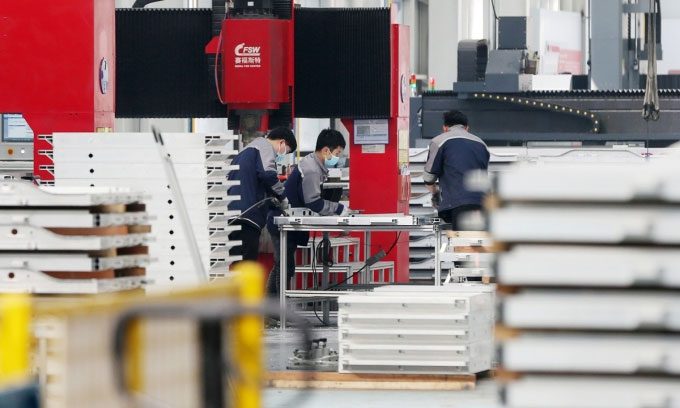China Discovers Nearly 1 Million Tons of Lithium Ore, a Key Metal for Batteries and Electric Vehicles, in Yajiang, Sichuan Province.

Workers assembling lithium batteries in Huai’an, Anhui Province, China. (Photo: VCG).
Wang Guanghua, the Minister of Natural Resources of China, described the new discovery in Yajiang as a “major breakthrough,” according to Xinhua on January 18. This is the largest pegmatite lithium ore deposit in Asia, according to the Ministry of Natural Resources.
Lithium is a soft, silvery-white alkali metal with the atomic number 3. It is known for its unique properties, such as being the lightest metal and highly reactive with water. Dubbed “white gold” or “the green energy metal of the 21st century,” lithium plays a crucial role in efforts to achieve carbon neutrality. It is also a vital component in the production of electric vehicles, lithium-ion batteries, and solar panels.
China’s lithium reserves are believed to be scattered across various locations, while exploration activities are still in the early stages. So far, lithium has primarily been discovered in Sichuan, Qinghai, Tibet, Xinjiang, and Jiangxi. Lithium carbonate, commonly used in lithium-ion batteries, can also be extracted from salt lakes. China has approximately 1,500 such lakes, providing potential for discovering even more lithium resources.
The distribution of lithium ore around the world is uneven. China accounts for about 7% of identified lithium resources and ranks sixth globally, behind Bolivia, Argentina, the United States, Chile, and Australia.
Last year, the United States discovered the largest lithium deposit in the world in the McDermitt Caldera, a volcanic crater on the Nevada-Oregon border. This crater, formed 16 million years ago, is estimated to contain 20-40 million tons of lithium, potentially meeting the surging global demand.





















































